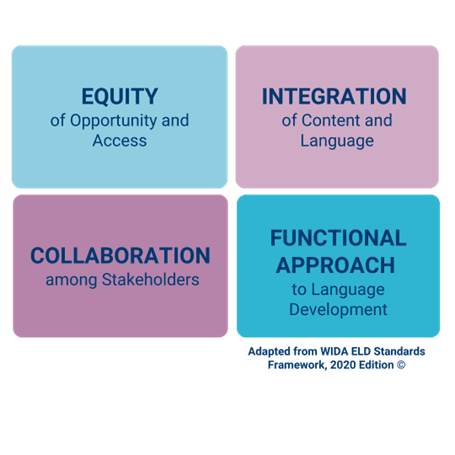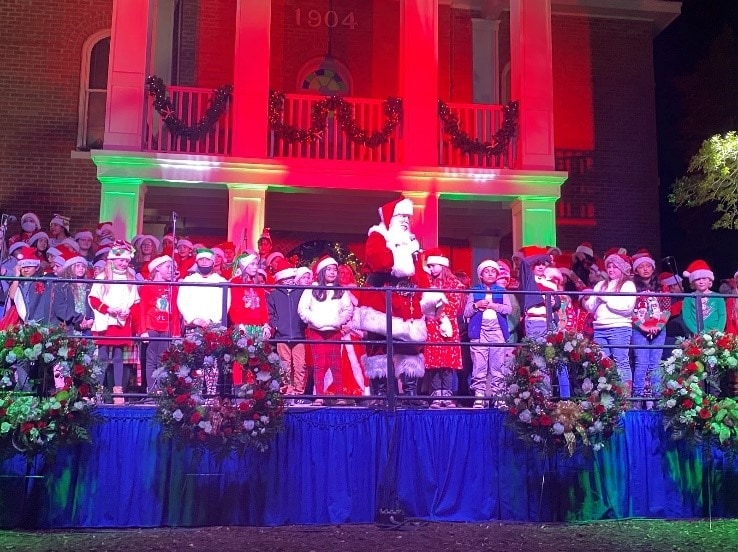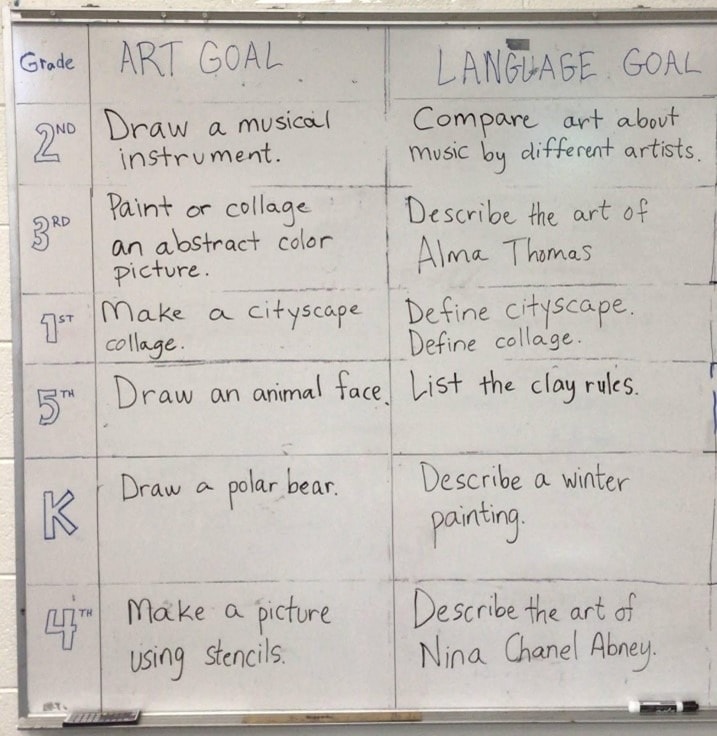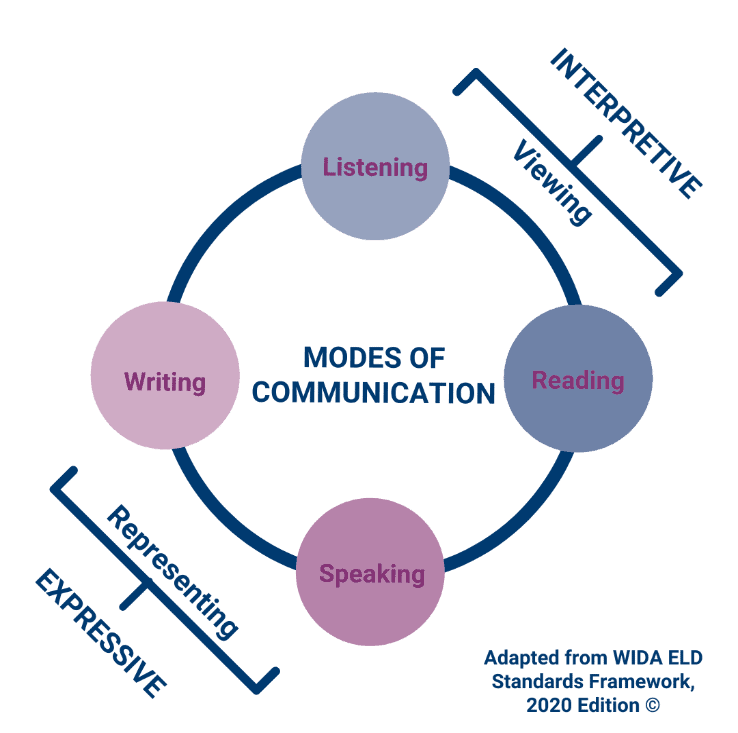NAfME BLOG
Developing Teachers to Advance Multilingual Learners in Music Education

/ News Posts / Developing Teachers to Advance Multilingual Learners in Music Education
Developing Teachers to Advance Multilingual Learners in Music Education
By NAfME Member Brandon Roeder
Presented Developing Teachers to Advance Multilingual Students in Music Education at the “NAfME is ME!” 2022 NAfME National Conference in National Harbor, Maryland.
When we say that music education is for everyone, we mean everyone. We also recognize that many of our teachers are at a loss when faced with the task of creating meaningful instruction for student populations who are increasingly multilingual. Informed by our own experiences with students whose first languages are not English, the Arts Education team at the North Carolina Department of Instruction has collaborated with the ESL/Title III team to create documents that focus on how the arts teacher will approach Multilingual Learner support. These resources, which we will share at the 2022 NAfME National Conference, identify the most prominent Key Language Uses and modes of communication in specific music standard grade bands.
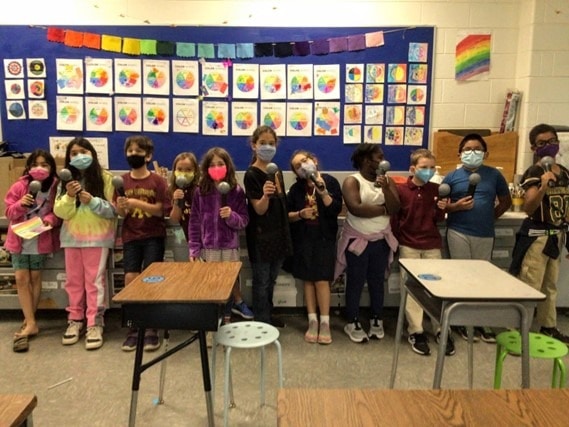
Students at Frank Porter Graham Bilingüe Elementary in Chapel Hill Carrboro City Schools develop their oral communication skills when sharing their work.
Four Big Ideas
The national WIDA Standards have four “Big Ideas” around which to center their work: Equity of Access, Collaboration, Integration of Content and Language, and a Functional Approach to Language Acquisition. In our session, we’ll examine how teachers and Arts Administrators across the state of North Carolina are working within these four areas to advance their Multilingual Students in Music.
Equity of Access
Silvia MacDonald of Moore County uses her unique position over both ESL, World Languages, and the Arts to ensure that all students are served in all areas. Beginning with showing teachers how to read an EL plan and continuing with support and professional development, Silvia will share resources for the music teacher to bring music instruction equitably to all students.
Collaboration
The pandemic pushed many music teachers into self-contained classrooms as an extra set of hands, but two teachers in a Spanish Immersion school in Manteo, North Carolina, saw only possibilities where others saw frustration. Stop by to learn how they brought together the entire community through song while elevating multilingual students to leadership roles.
(Left) English learners are given leadership opportunities to share their languages at Manteo Elementary School in Dare County. (Right) Manteo Elementary School students shared multilingual winter music highlighting authentic Hispanic folk songs at the 2021 Christmas Tree Lighting in Downtown Manteo.
Integration of Content and Knowledge

Arts Integration Lesson on Personal Flags from Anna Irvin, ESL Teacher (K-5) at China Grove Elementary, Rowan-Salisbury Schools (irvinal@rss.k12.nc.us)
Functional Approach to Language Acquisition
Building on the work of Stephen Krashen, teachers in North Carolina have found it useful to provide a language objective along with an artistic one for every lesson. Though a visual art example is shown here, we’ll be sharing resources on how to do this for your specific multilingual learner population in music classes. Additionally, the NCDPI team has created a Key Language Uses and Standards Correlation resource which cross-references music standards with the key language uses teachers implement when instructing that specific objective.
Images 6 & 7: Jessica Greene, ESL certified Art Teacher at Frank Porter Graham Bilingüe Elementary in Chapel Hill Carrboro City Schools uses language objectives in addition to Visual Arts Objectives with her students.
Key Language Uses
The Key Language Uses are used by ESL and content teachers alike. The Key Language Uses describe prominent ways that language is used in school, across all disciplines (WIDA 2020). Key Language Uses share some common aspects across disciplines, and yet each discipline also has unique ways of applying each. Below are brief definitions for each with specific arts education examples:
- Narrate highlights language to convey real or imaginary experiences through stories and histories.
- Example: Share experiences of being an audience member
- Inform highlights language to provide factual information.
- Example: Compare execution of themes between artists and/or composers
- Explain highlights language to give an account for how things work or why things happen.
- Example: Give examples of how events in society influenced a specific musical movement
- Argue highlights language to justify claims using evidence and reasoning.
- Example: Evaluate music and defend reasoning
Modes of Communication
In the National WIDA Standards for Multilingual Learners the Language Expectations set goals for content-driven language learning. They add specificity to the Standards Statements and Key Language Uses and make visible the language associated with the content areas (WIDA 2020). In the Language Expectations, the four individual language domains (listening, speaking, reading, and writing) are consolidated into two more inclusive modes of communication: interpretive and expressive. This is where Arts Education shines.
- The interpretive communication mode encompasses listening, reading, and viewing (watching and examining)
- The expressive communication mode encompasses speaking, writing, and representing (drawing, singing, moving, playing)
*Note: The delineations of expressive and interpretive language have been extended in these resources to include the ways in which musicians express and interpret visuals, icons, movement, and sound.
How to Use the Correlation Resource
A music teacher with multilingual learners will need to know two things: what their student’s English Proficiency is, and what music standard they intend to teach. Our tables indicate which key language use is being most prominently utilized for each standard, so that the teacher can identify the appropriate modification, scaffold, or language objective a student needs in order to deliver instruction successfully, without lowering student expectations while supporting the language development of their Multilingual Learner’s responses. You can find an example of these language expectations in the North Carolina English Language Development (ELD) Standard Course of Study.
The Future
As our country’s multilingual population grows, instructional materials to support the inclusion of these students will be essential. Training teachers of all content areas to meet the needs of multilingual learners is good for all learners. Additionally, aligning our instructional—and pedagogical—vocabulary improves teaching quality so that all of a students’ instructors can more efficiently collaborate and align their instruction.
Works Cited
WIDA. WIDA English Language Development Standards Framework, 2020 Edition: Kindergarten–Grade 12. Board of Regents of the University of Wisconsin System, 2020.
About the author:
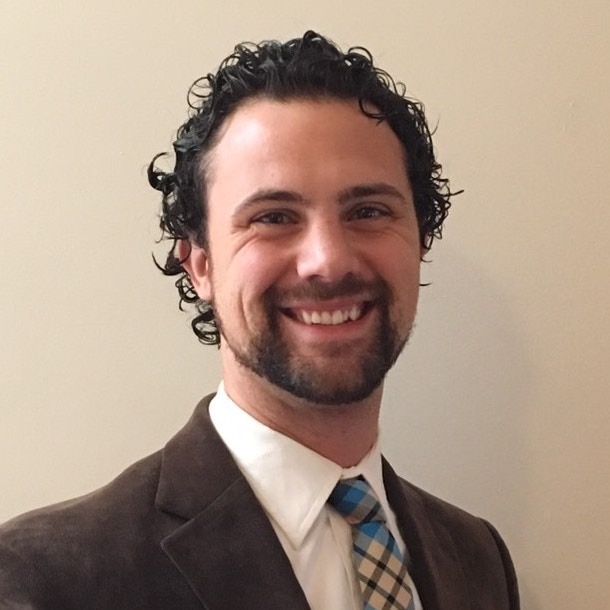 NAfME member Brandon Roeder is the K–12 Music and Theatre Arts Consultant at the North Carolina Department of Public Instruction. Across ten years in the field, he taught PK–5 music and high school chorus, marching bands and drumlines, a strings program, and Arts Integration. Brandon completed his Master’s as a Curriculum Specialist from Appalachian State University.
NAfME member Brandon Roeder is the K–12 Music and Theatre Arts Consultant at the North Carolina Department of Public Instruction. Across ten years in the field, he taught PK–5 music and high school chorus, marching bands and drumlines, a strings program, and Arts Integration. Brandon completed his Master’s as a Curriculum Specialist from Appalachian State University.
Did this blog spur new ideas for your music program? Share them on Amplify! Interested in reprinting this article? Please review the reprint guidelines.
The National Association for Music Education (NAfME) provides a number of forums for the sharing of information and opinion, including blogs and postings on our website, articles and columns in our magazines and journals, and postings to our Amplify member portal. Unless specifically noted, the views expressed in these media do not necessarily represent the policy or views of the Association, its officers, or its employees.
September 15, 2022. © National Association for Music Education (NAfME.org)
Published Date
September 15, 2022
Category
- Diversity, Equity, Inclusion, and Access (DEIA)
- Representation
Copyright
September 15, 2022. © National Association for Music Education (NAfME.org)
